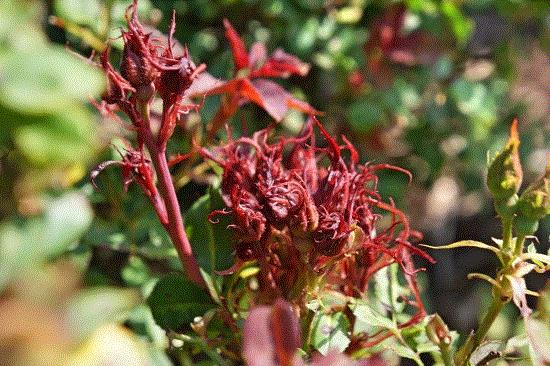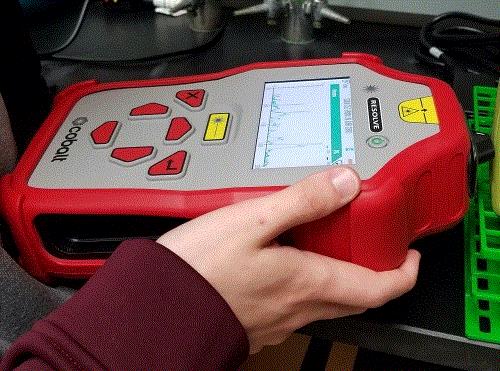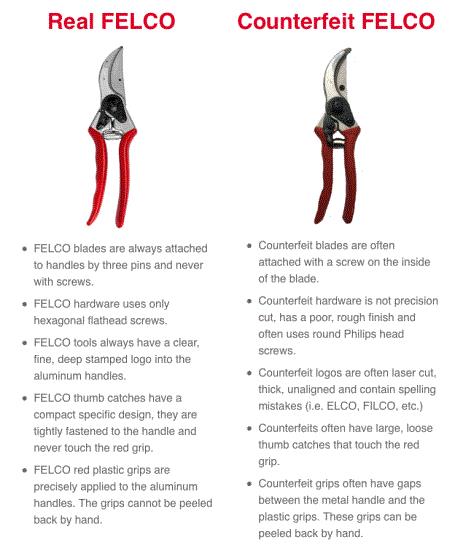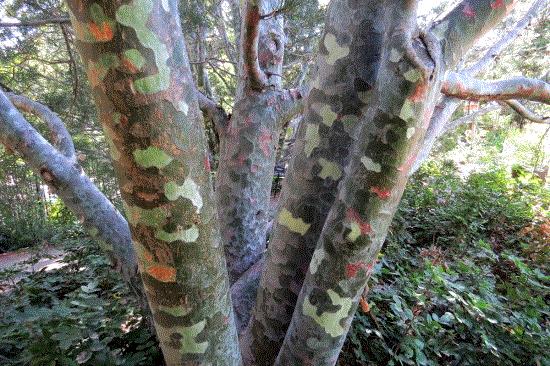Rose Rosette Disease—Silently Lurking
Happy Thanksgiving week everyone (and happy Statehood Day in Bosnia and Herzegovina). This time of the year can be rather slow on the news front when it comes to covering landscape and nursery topics, but there's always something interesting happening in this big ol' goofy world.
The first bit of news relates to a topic that's of great concern to anyone who grows or installs roses and relates to Rose Rosette Disease (RRD), which continues to spread across the U.S. at an alarming rate. One of the biggest issues has been diagnosing RRD infection, as plants can be infected yet not show symptoms for weeks or months. During that asymptomatic time, typically via worker activities or pest movement, the virus can spread throughout a landscape or production block.

Common symptoms of Rose Rosette Disease, although most folks aren't aware that symptoms can lag behind infection date for months.
Complicating matters further is the fact that viruses cannot be seen with a microscope, let alone a naked eye. Eriophyid mites transmit the virus, but even the mites are difficult to find. They're too small to be seen and are often difficult to find. Diagnosticians and scouts have no choice but to rely on visible, observed symptoms, until serological and/or molecular techniques can be conducted in the lab.

Enter Texas A&M Researchers
A research team led by Texas A&M University has been working since 2014 on various aspects of RRD through a multi-year, multi-million dollar grant titled "Combatting Rose Rosette Disease" funded by the U.S. Department of Agriculture and development of diagnostics has been a key component. Knowing sooner that a plant is infected will, in the very least, help limit spread and movement of the disease.
A small team of researchers (part of the larger group mentioned above) led by Dr. Dmitry Kurouski has actually be successful in developing a new diagnostic tool for RRD detection. Using a hand-held, portable Raman spectrometer, Dr. Kurouski’s team has correctly identified the virus in leaves, both non-invasively and non-destructively, with an almost instant read.
Raman spectroscopy works by relying on light to interact with molecular vibrations in a leaf. A "fingerprint" is made based on these vibrations, meaning that the virus that causes RRD is identified by its unique fingerprint. Previously, the team proved that this technology could identify fungal diseases on corn, wheat and sorghum, and eventually adapted it to successfully compare healthy and asymptomatic rose leaves. They could even differentiate rose leaves with different degrees of infection.

This handy-dandy spectrometer is being used to detect Rose Rosette Disease in asymptomatic plants and could change the game in virus scouting and identification.
While not yet ready for widespread adoption and use in the industry, this tool can help diagnostic labs by acting as an initial screen for RRD that can help save on more costly, molecular techniques. Plus it may be available for use in the field one day!
The American Rose Society provided small research grants for a portion of this work. AmericanHort and its Horticultural Research Institute affiliate, in conjunction with like-minded organizations such as the Society of American Florists, previously supported Rose Rosette research that initially got this project moving in the right direction.

Venus Maidenhair Fern
In the last newsletter, my graduate student (Mary Lewis) seemed to hit a home run with her coverage of live oak, so I figured she deserved an encore presentation! Taking a break from scientific writing (a.k.a. writing the way normal people do) is uncommon for poor Mary, due to her mean academic advisor. So, in a rare moment of guilt-laden compassion, I present to you another installment of Mary’s plant musing.

Sometimes a beautiful plant captures our attention and love ... yet the plant seemingly does not love us back. Such is my plight with Adiantum capillus-veneris or Venus maidenhair fern. Oddly enough, I first laid eyes on this beauty in Italy of all places. It’s feathery foliage of a luminous happy green color drew me in and possessed my soul. And then proceeded to destroy it as I murdered it again and again.
Even though this taxa is a perennial that's native to the eastern and southern U.S. (Zones 5 to 8), is low light loving and can be an easy indoor plant, I can only keep them alive for three months tops. My issue is these adorably difficult babies adore wet feet and the instant you let them dry out (say, a vacation, too much time in the office or a mental breakdown) they die on you. If they begin to wilt, you’re done. No coming back. But ... that's foliage!
En mass, these plants are stunning. In pots, they're stunning. Whenever I let students into our interior plants greenhouse, everyone goes first for the maidenhair. They’re so light and fluffy and a happy green that people can’t keep their hands off it. So while I can’t say this is a “so easy to grow that your cat could do it” plant, it’s one of those plants I adore and that, like hybrid tea roses, fails to reciprocate my adoration. Yet I still love them. Kinda like undergrad students and teenagers.

Farm Workforce Modernization Act—Your Action is Needed
Tristan Daedalus (Director, Advocacy & Policy Communications at AmericanHort) has sent out a call to action that affects many readers of the newsletter and I hope that you can take the time while in a turkey-induced catatonic state to take action. Even if this doesn't directly affect you or your business, it has the potential to significantly (and positively) impact the Green Industry as a whole, and therefore, is very important!
Reps. Zoe Lofgren (D-CA-19), Dan Newhouse (R-WA-04), and 47 of their colleagues have introduced the bipartisan Farm Workforce Modernization Act, H.R. 5038. The bill would go a long way toward addressing the extreme labor crisis confronting horticulture and agriculture here in the U.S.
The House Judiciary Committee considered the bill this past Wednesday (November 20), with discussions continuing late into the evening. The final, recorded vote was held Thursday morning (November 21) and the bill has been sent on to the full House of Representatives for consideration!
We need your help to show House members the strong support this bill enjoys from across the nation and the vibrant commitment to the changes this bill would make.
Will you take a minute to let your Representative know you support this bill?
Among the changes this bill makes, it would:
-
Provide pathways to legal status for experienced and contributing agricultural workers, with strong incentives to continue working in agriculture
-
Streamline the H-2A program for agricultural employers, providing some wage and cost relief and certainty
-
Phase in use of the E-Verify system across the agriculture sector, after stabilizing reforms are in place
For a more complete summary of the bill, click here.
Now we just need your help in getting this legislation across the finish line in the House. We’ll keep you informed on the progress toward advancing and improving the bill as it makes its way through the legislative process.

Felco Offers Replacements for Fakes
I was impressed by an email I recently received from the folks at Felco—you know, the pruning tool folks. In short, Felco is offering replacements for customers who purchased counterfeit pruners on Amazon. They're doing this despite the counterfeiting issue squarely falling upon a lack of quality control at Amazon. Rather than trying to re-state it, here's the official press release from Felco:
Felco announced today that it has launched a new initiative targeted at an estimated 3,000 customers who unknowingly purchased counterfeit pruners on Amazon. Its new website, www.realfelco.com, guides customers to mail in their counterfeit tool and receive a genuine Felco tool in return, free of charge.
“In 2018, we (at Felco) started receiving emails from long-time devoted customers who unknowingly purchased counterfeit tools on Amazon with the Felco brand and with a remarkable visual likeness to authentic Felco tools,” said Stephan Kopietzki, Chief Commercial Officer. “We immediately reached out to Amazon to attempt to resolve the issue, but have been unable to settle it satisfactorily. Counterfeit tools continue to be sold on Amazon, even as recently as this week, and some customers have returned counterfeits only to receive a replacement counterfeit product from Amazon—that just doesn’t live up to our customer expectations. Felco tools are world-renowned for quality, durability and longevity and our customers are important to us. There is only one Felco, so we decided to take matters into our own hands to make sure all our customers are using genuine Felco products.”
Customers who think they may have a counterfeit tool should visit www.realfelco.com, download a free shipping label and mail their counterfeit tool to Felco. If the tool is determined to be a counterfeit, Felco will ship a new, genuine Felco tool back to the customer at no charge.

“We started hearing from our customers about counterfeit products during the holiday season last year,” said Ryan Amberg, Business Development Manager. “People were hugely disappointed to discover they purchased a counterfeit tool, especially those who gave them as gifts, so we’re being proactive this holiday season to make people aware of counterfeits and help those who have been impacted. Our customers are deeply loyal to the Felco brand because they associate Felco with high-quality, Swiss-made products carefully crafted to last generations. It’s important our customers know we make a long-term commitment to them.”
Felco estimates the Asian-made counterfeit tools were sold on Amazon from October 2018 onward, but anyone who believes they may have a counterfeit tool is encouraged to send it in for evaluation.
Well done, Felco. That’s some serious customer service.

Lacebark Pine
In Zones 8 north, it’s reached that time of year when the conifers return to dominance in the landscape. All of those pretty flowering trees and shrubs are becoming a memory and we horticulturists are simply happy to have shades of green, gold and glaucous greys/silvers to hold us over until spring.
One of my favorite conifers has always been lacebark pine (Pinus bungeana), not so much for its foliage, which is a typical medium to dark green. Where lacebark pine shines is, as the name suggests, with the bark. If I'm visiting a botanical garden or arboreta in Zones 4 to 7, it’s one of those specimen plants I always keep an eye out for. It’s also one that usually gets tucked into a corner, which I suppose is to force you to meander toward it in a zombie-like state once you see it. A perfect example of this technique is at Denver Botanic Gardens—you get extra credit if you know the tree I’m talking about. If not, when you visit Denver Botanic, you need to wander to the far back corner to see this beauty.

Another reason I like lacebark pine is its adaptability. It really shines in Zones 6 to 7, although it will do well in Zones 4 to 5 (although winter storm damage can be an issue farther north). It also handles alkaline soils well, which pushes its range into the central and western U.S.
The species has a max size of about 45 ft. in height and 30 ft. in spread. However, more compact forms have been released, including Diamant (only about a 5-ft. rounded form at maturity) and Rowe Arboretum that’s about half the size of the species. Another cultivar, Silver Ghost, is similar in size to the species, but has much more vivid bark. Plant it in full sun and by limbing it up a bit, you not only expose a better view of the bark, but open up planting space for shade-loving herbaceous taxa under it’s filtered shade.

MSU Extension Online Greenhouse Courses
More and more universities—typically via Cooperative Extension faculty—are offering excellent continuing education courses for participants that have a wide range in educational history and industry experience. Michigan State University is one of the best and has a new series beginning December 2019.
Are you looking to refresh your knowledge on greenhouse topics such as greenhouse lighting, biological control or fertility? Do you have a new employee that could benefit? Register for the winter sessions of three self-paced courses in Michigan State University Extension’s Online College of Knowledge greenhouse series: Greenhouse and Horticultural Lighting, Biological Control for Greenhouse Growers and Floriculture Root Zone Management.

A total of 661 participants from 42 states and 33 countries have taken at least one of the online courses in this award-winning series. The courses serve as an excellent resource for greenhouse growers new to the industry or those who want to learn more about other areas of greenhouse crop production or pest management. All courses are now available in English and Spanish.
These non-credit courses in the series are pre-recorded and registrants have three months to complete the courses: December 1, 2019 to February 29, 2020. Students in the course will take a pre-test and a final exam to gauge their learning on the topics. Registrants can also complete the optional self-assessment quizzes to engage with the material throughout the course. Each course is $129 and there are three scholarships per course available to those with financial need.
Registration for all courses ends December 15, 2019. Invest in yourself today! Register for all of the courses at: https://www.canr.msu.edu/online-college-of-knowledge.

Our Wacky, Wonderful World—Notes from the Edge of Sanity
Where did November go? I swear, last week it was the beginning of October. Nonetheless, it’s time to start thinking of Christmas gifts and I'm sending out a call to all readers. I need your help in putting together the annual Christmas gift newsletter.
So send a note with your most wacky, ingenious, silly, cringe-worthy or otherwise unique horticulture gift ideas. No idea is too insane, although I don’t think the boss will want me to highlight the latest in cacti lingerie, so keep it clean(ish). I’ll highlight the best of the best in the next newsletter, which gives us all time to place orders and then return any fakes to Amazon.
Live authentic,

Matthew Chappell
Editor-at-Large
Nursery & Landscape Insider
This has been received by 27,470 of the hardest-working horticulturists in show business!
If you're interested in reaching 27,470 (and growing) clients who eagerly await every Nursery & Landscape Insider and surely read every word, contact Kim Brown ASAP and she'll hook you up.